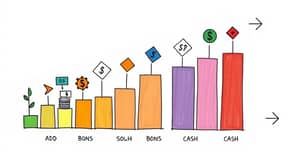
In today’s fast-paced financial world, investment decisions often appear to be guided by complex models, risk metrics, and algorithmic signals. Yet beneath every trade and portfolio pivot lies a human mind wrestling with emotion, intuition, and social pressure. When we acknowledge the hidden yet powerful role of psychology in finance, we open the door to more consistent returns and greater resilience during turbulent markets.
Decades of research have shown that real investors do not behave like the perfectly rational agents of classical economics. Daniel Kahneman and Amos Tversky’s landmark experiments revealed psychological factors—such as biases and emotions that shape every market cycle. Their work upended assumptions and gave rise to behavioral finance, a discipline that blends economics, psychology, and neuroscience to explain and predict investor behavior.
Behavioral finance challenges the notion that decisions are driven purely by logic. Instead, it shows how mental shortcuts—known as heuristics—can lead to predictable errors. Prospect theory, introduced by Kahneman and Tversky, explains why people weigh losses more heavily than equivalent gains and why they often overvalue small probabilities while undervaluing large ones.
Further studies highlight that emotional states—such as fear during a market crash or euphoria at a bubble’s peak—can override even the most thorough analysis. Neuroimaging experiments confirm that brain regions associated with reward and punishment light up more during financial decisions than in purely logical tasks, proving that emotion is hardwired into our investment psyche.
Investors face numerous cognitive traps that can derail well-laid plans. The most pervasive include:
These biases reinforce one another, producing cycles of extreme optimism and deep pessimism. Left unchecked, they drive excessive trading and abandoning strategies just when discipline matters most.
The discrepancy between the theoretical returns of a disciplined strategy and the returns investors actually realize is called the behavior gap. Multiple studies estimate that emotional mistakes shave off 3% to 6% annually from portfolio performance. Over decades, this gap can compound into a staggering difference in wealth accumulation.
Conversely, portfolios structured with behavioral safeguards can improve the predictability of investment outcomes by eighty percent compared to traditional methods, which hover around ten percent accuracy. Vanguard, BlackRock, and other leading institutions have documented these effects in client portfolios worldwide.
By quantifying these impacts, investors gain clear targets for improvement and can track progress over time.
Becoming aware of biases is just the first step. To translate knowledge into action, consider these practical techniques:
These strategies establish guardrails that guide investors back to their long-term plan, even amid chaos.
Warren Buffett, whose track record spans decades of market cycles, often underscores the supremacy of temperament over sheer intellect. He asserts that emotional discipline, not raw smarts determines success in investing. In his own words: temperament to control the urges that get other people into trouble is the key to outperforming the crowd.
Buffett’s counsel echoes a broader theme: markets reward patience and rationality. The greatest challenge is not gathering data, but resisting the emotional pull to deviate from a well-conceived plan when it matters most.
Forward-thinking advisors and robo-advisors are now leveraging behavioral science to tailor portfolios that align with real human tendencies. By combining quantitative tools with psychological profiling, they design solutions that clients can follow through booms and busts.
Key steps include:
These measures transform theoretical plans into living roadmaps that account for cognitive and emotional dynamics, significantly raising the odds of sticking to a strategy.
The journey to investment excellence begins with understanding ourselves. Ignoring the behavioral side of portfolio decisions is akin to sailing stormy seas without a compass. By embracing the insights of behavioral finance and embedding simple but effective checks, investors can narrow the behavior gap, enhance returns, and cultivate confidence in every market environment.
The numbers on a spreadsheet matter, but they tell only half the story. To unlock the full potential of your investments, cultivate disciplined investment strategies that minimize emotional pitfalls and commit to ongoing self-reflection. In doing so, you’ll forge a path toward more resilient, robust portfolios and lasting financial success.
References













